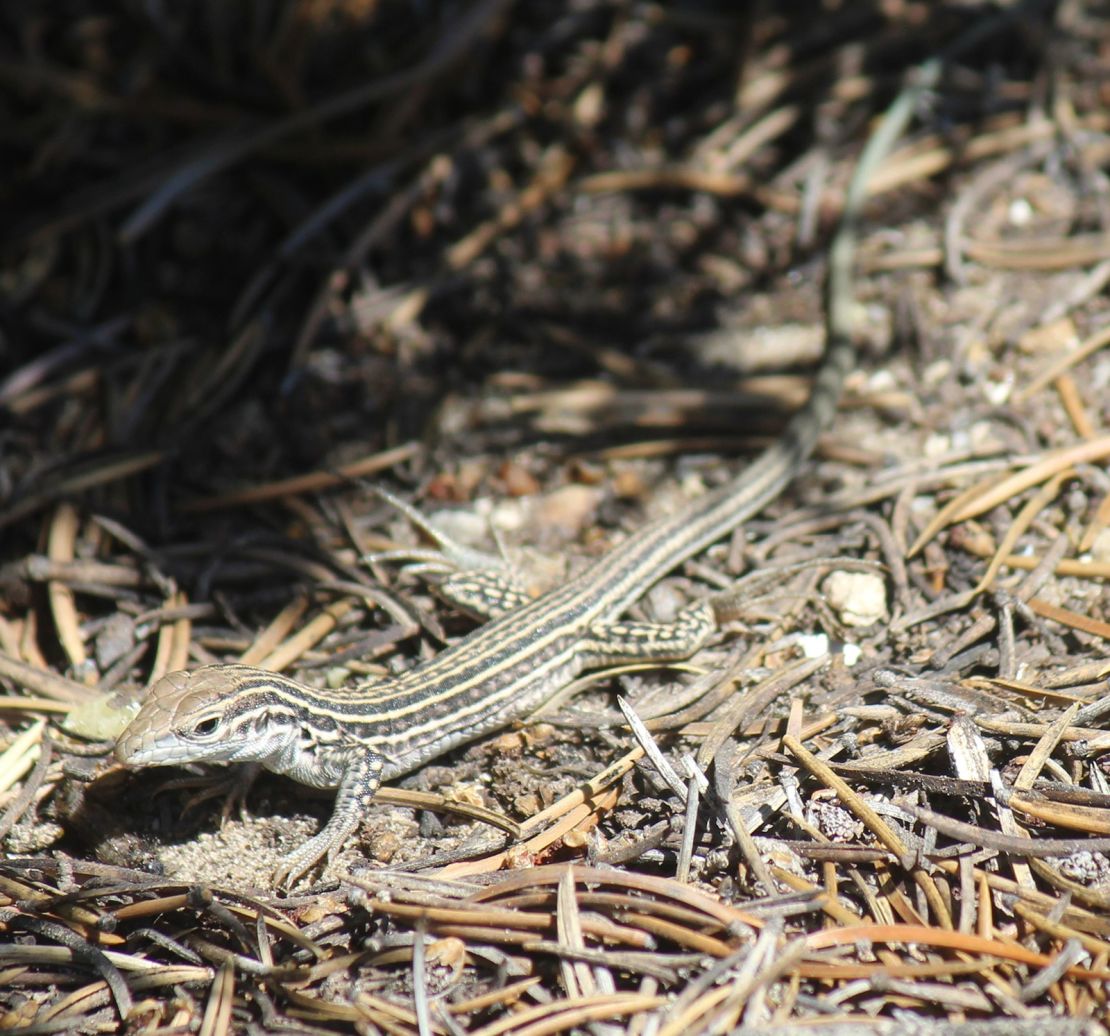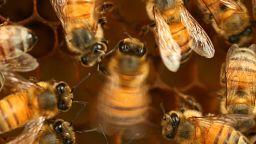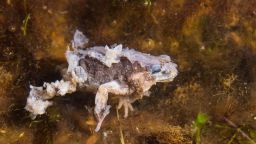Sign up for CNN’s Wonder Theory science newsletter. Explore the universe with news on fascinating discoveries, scientific advancements and more.
Living in a neighborhood with lots of noise can make you jittery, especially if you’re a lizard that’s just a few inches long.
It’s no wonder that lizards exposed to noise pollution from low-flying fighter jets have resorted to stress-eating.
Colorado checkered whiptails (Aspidoscelis neotesselatus) — striped and patterned lizards that live only in southeastern Colorado — are an all-female species that reproduce asexually. They also endure considerable noise from US Army flyovers.
When researchers recently examined blood samples from these lizards, they detected elevated stress levels from the din. The lizards also had a coping strategy: They moved less, and they ate more.
By snacking during noisy flyovers, the lizards are likely replenishing energy that’s lost during metabolic responses to stress, scientists reported Wednesday in the journal Frontiers in Amphibian and Reptile Science.
“We show that noise disturbance does have measurable physiological impacts on Colorado checkered whiptails,” co-lead study author Megen Kepas, a doctoral student at Utah State University, said in a statement. “We also show that they are somewhat resilient and may compensate for this to some degree,” by changing how much they eat and move when aircraft are nearby.
“I found the study to be super interesting,” Tracy Langkilde, a professor of biology and the Verne M. Willaman Dean at Pennsylvania State University’s Eberly College of Science, told CNN.
“There’s been growing interest in the effects of noise on native animals,” but research in this area focuses primarily on birds, said Langkilde, who was not involved in the study.
Langkilde’s research investigates stress responses in wood frogs that experience high levels of traffic noise near the roadside ponds where they breed.
“Seeing something about lizards is expanding our understanding on how noise affects our native species in really important ways,” she said.

In skies over grassland habitats that the checkered whiptails call home, military aircraft are a frequent presence. The lizard’s range extends into the US Army’s Fort Carson Military Base in Colorado Springs, which covers 212 square miles (550 square km) and contains several populations of the lizard. Fort Carson was the main funder of the research.
Fighter jets and transport aircraft soar overhead, along with Black Hawk, Apache and Chinook helicopters, often within 20,000 feet (6,100 meters) above the ground, according to the study.
At times when there were no flyovers, ground readings registered no higher than 56 decibels (dB), about as loud as a refrigerator’s hum. By comparison, ground readings during flyovers surged to 112 dB — louder than a jackhammer and just above the average pain threshold for humans.
During checkered whiptails’ reproductive season in 2021, the scientists observed dozens of lizards during flyovers. They caught, weighed and measured the lizards, collecting blood samples from 82 females. The researchers also checked to see if lizards were carrying eggs, using a portable ultrasound device to determine egg size and number before marking and releasing the animals.
Analysis of the blood samples showed elevated levels of the stress hormone cortisol and increased production of ketones, which are energy-burning compounds associated with heightened stress. Flyovers also boosted the lizards’ interest in food, with lizards hunkering down and spending more time eating than they did when aircraft were absent. Other studies have shown animals “freezing” in response to disruptive noise, as the lizards did. But the lizards’ feeding behavior “is quite novel,” as most prior research found that noise pollution typically led to animals eating less, the scientists wrote in the study.
“Compensatory eating would allow individuals to maintain their energy levels during a stressful event,” said co-first author Layne Sermersheim, a master’s candidate at Utah State University, in a statement. “This is important because metabolism, physical activity, investment into reproduction, and hormonal responses require energy.”
In humans, persistent stress can also raise cortisol levels, which can lead to increased appetite and stress-eating. Such behaviors sometimes persist even after the original stress triggers subside.
As for the lizards, stress from the flyovers could be reduced if pilots avoided locations where lizards gather during breeding season, the authors suggested. Another remedy could be flying high enough to lower noise at ground level to below 50 dB.
A growing body of evidence shows that human noise pollution disrupts wildlife on land and in the oceans; it can affect the volume and frequency of animal vocalizations and may change their reproductive behavior, or where they choose to hunt.
“Although, the stress-eating — this is the first time that I know of that anyone has found this effect in response to anthropogenic stresses in the field,” Langkilde said. While eating more makes sense for quickly replenishing stress-related energy loss, it remains to be seen how this behavior could affect lizard populations over the long term, she added.
“Understanding the implications of these adaptations is really important if we’re truly to understand the consequences,” Langkilde said.




